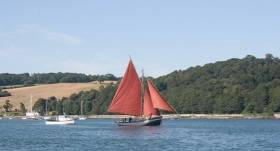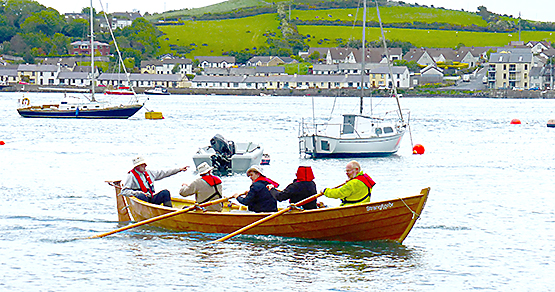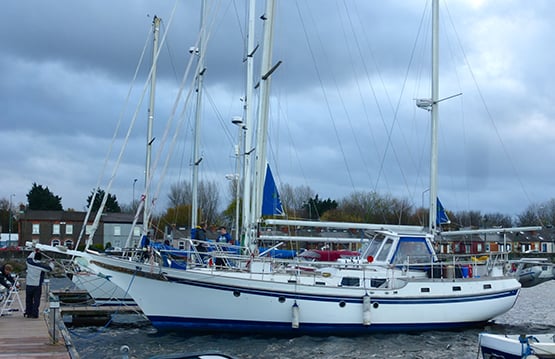Displaying items by tag: Stu Spence
Portaferry Sails & Sounds Will Broaden Life In The Narrows
The revival of Portaferry in Strangford Narrows as a mid-summer focal point for classic and traditional sail afloat, combined with traditional music and festivities ashore, is set to take place from Thursday June 16th to Sunday June 19th this year with the newly branded and re-vamped Portaferry Sails & Sounds Festival 2016 writes W M Nixon
Time was when the highlight for traditional sailors at Portaferry, where the tides sluice with some strength in and out of Northern Ireland’s saltwater lake of Strangford Lough, was racing by restored Galway hookers - they came north in substantial numbers in late June from their home ports in the greater Dublin area. But it is the new Dublin-Galway motorway – of all things - which has seen numbers of traditional craft around Dublin Bay decline as they migrated back to their newly-accessible true heartlands around Galway Bay, such that now if you want to be sure to see hookers - including many Dublin-owned ones - racing in strength, you need to go Macdara’s Island off Connemara for St MacDara’s Day – July 16th – or to Kinvara at the head of Galway Bay for Cruinniu na mBad, which in 2016 is August 19th to 21st.
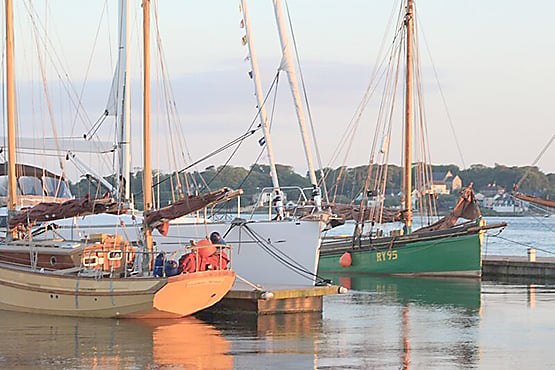
Alan and Irene Aston’s Cornish Crabber Golden Nomad in Portaferry Marina, while beyond with bowsprit housed is Joe Pennington’s famous Manx Longliner Master Frank
But there are other places in the Irish Sea where traditional craft and interesting old gaffers are to be found, notably in North Wales and particularly in the Isle of Man, where Joe Pennington has restored the last Ramsey Longliner – Master Frank – into superb sailing conditions, while Mike Clark continues to maintain the Manx nobby White Heather under her classic labour-intensive lugger rig.
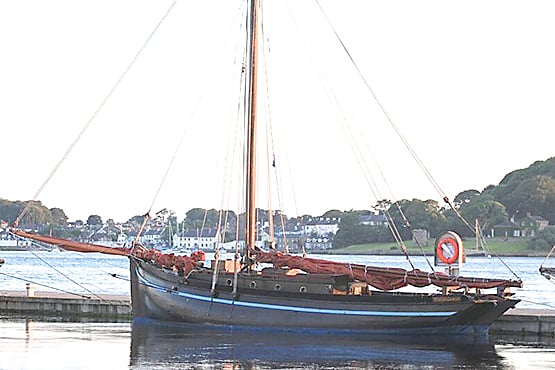
Naomh Cronan in Portaferry Marina
As well of course, the big Clondalkin-originated Galway Hooker Naomh Cronan continues to make the Irish Sea her home base, sailing from Poolbeg in Dublin, and there’s an increasing number of classic restored gaff yachts at many centres all round the Irish Sea and the Firth of Clyde, which link together through the Old Gaffers Association. This will provide a real increase in the fleet which this year will make Portaferry a major happening again, the interest further heightened by the presence of Strangford Lough’s fleet of nine-plus Iain Oughtred-designed four-oared skiffs, which have a regular racing programme in the lough.
The Strangford Village Rowing Club’s skiff in action at their home port, with Portaferry just across the narrows. Photo: W M Nixon
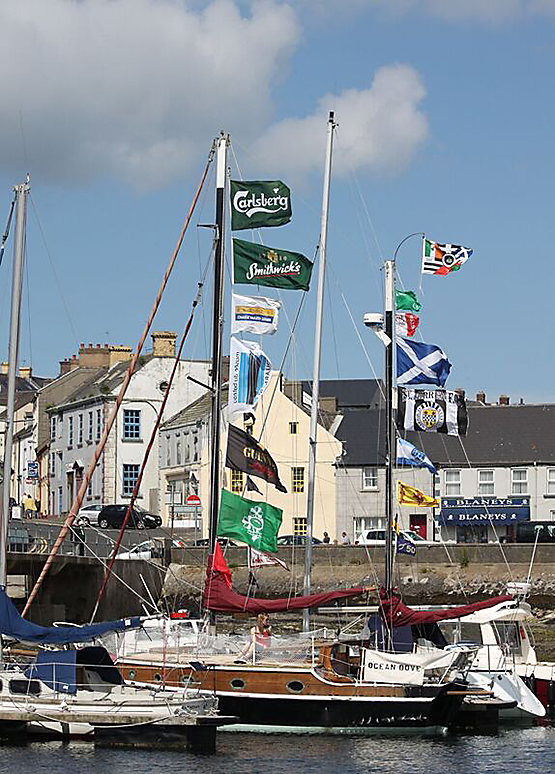
Gary Lyons’ ketch Ocean Dove in party mode in Portaferry Marina
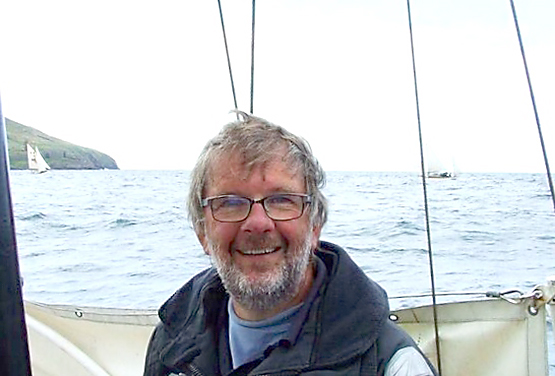
Adrian “Stu” Spence, one of the main movers and shakers behind the new-look Portaferry Sail & Sounds 2016 in June.
The two powers in the land who are making sure it all takes off are Garry Lyons of the Northern Ireland Old Gaffers Association, skipper of the vintage ketch Ocean Dove, and another northern sailor, the legendary Adrian “Stu” Spence, who in 2014 finally parted from his incredibly old Pilot Cutter Madcap (she may have dated back as far as 1873), which over many seasons he’d cruised to places as distant and different as Greenland and Spain.
In the Autumn of last year he came into Poolbeg with his new Mediterranean-acquired vessel, a rakishly clipper-bowed Vagabond 47 ketch which Skipper Spence currently refers to as “The Love Boat” – we look forward to learning of the official name in due course. The new ship was in Poolbeg in order to access the specialist talents whom Stu Spence has got to know during his long years with the Old Gaffers, in order to make the big ketch fit for anything before she finally goes on to her home mooring at Ringhaddy in Strangford Lough, and she’ll admirably fulfill the role of one of the flagships for Portaferry Sails and Sounds in June.
Stu Spence currently refers to his newly-acquired Vagabond 47 ketch – seen here in Poolbeg Marina – as “The Love Boat”. Photo: W M Nixon
Run jointly by the Northern Ireland Old Gaffers Association and Portaferry Sailing Club, Portaferry Sails & Sounds 2016 promises the perfect mixture of sport and spectacle, sailing and singing, and dancing and divilment to make the Midsummer Weekend pass merrily in the classic and traditional style.

Mike Clark’s traditionally-rigged Manxy Nobby White Heather from Peel is expected in Portaferry in June



























